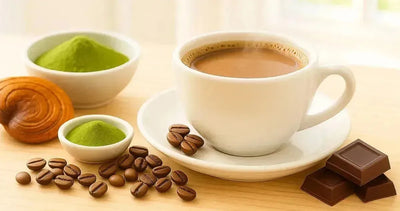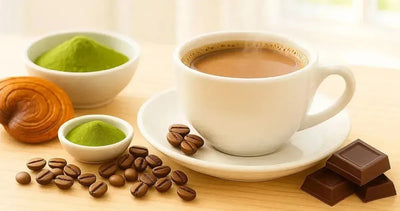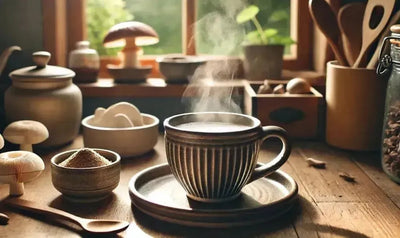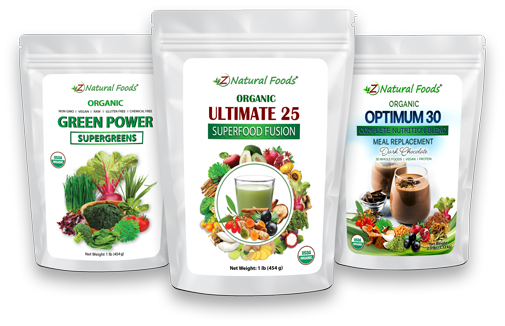Description
Description
Z Natural Foods is committed to offering our customers a diverse selection of high-quality foods in their most versatile forms.
Our Spanish Bee Pollen is a prime example of our commitment to quality.
Today, we aim to answer some of the most frequently asked questions about this versatile product and Bee products in general, to ensure you have all the information you need to make informed choices about your food supplements and bee pollen.
Frequently asked questions about Bee Pollen
1) What is Bee Pollen, and how is it produced?
In simple terms, bee pollen is the male reproductive part of plants, collected by honeybees as they forage for nectar.
The process that creates bee pollen is another example of the incredible acts of Mother Nature. Bee pollen is produced through a three-step process.
Step one is foraging and collecting the material.
- Worker bees visit flowers to collect the nectar. In the process, their hairy bodies pick up fine, powdery pollen grains.
- As they gather pollen, it mixes with nectar and salivary secretion from the bees' glands. This process moistens the powder, helping to bind the grains together.
- The bees use the stiff hair on their legs to brush the mixture onto their hind legs, where a special structure known as a pollen basket is located. This is where the mixture is compacted into small, sticky pellets.
- The pollen basket is a concave area on the hind leg of certain female bees that holds the pollen they collect.
Step two is to bring the material back and store it in the hives.
- When the forging bee returns to the hive, it unloads the pollen pellets into the empty honeycomb cells.
- Then, the working bees use their heads to pack the material into the cell, creating a dense, layered substance.
- Finally, the bees seal the top with a layer of honey.
The third step is fermenting the pollen into bee bread.
- This final step is done through lactic acid fermentation.
-
The packed pollen, which is mixed with enzymes, nectar, and honey, naturally undergoes a fermentation process that breaks down the carbohydrates and lowers its pH level.
- This fermentation process naturally enhances the nutritional value and preservation of pollen, making it more digestible for the bees.
- It further allows for long-term storage without spoiling.
- Once the pollen completes the fermentation process, it is known as bee bread, which is used to feed both adult bees and larvae.
2) How do beekeepers collect bee pollen?
The collection of bee pollen employs traditional methods that have seen very few advances over time. These methods are effective, efficient, and have withstood the test of time in producing the finest bee pollen products for human consumption.
The beekeeper prepares the hive by installing traps at the entrance and exit. The traps are designed to collect pollen without obstructing the bees' movement and feature small screens that scrape off the pollen from the hind leg sac.
During the high season, the beekeeper collects pollen every few days, which helps maintain a healthy hive and ensures that the bees can continue their foraging activities. However, it is essential to understand that the pollen trap should not capture all the pollen, as the bees need some to sustain the colony and feed their larvae.
3) How does bee pollen's biodiversity make it such a unique food?
- Each variety of pollen has a slightly different color, which tells a story about its geographic and botanical origins.
- While the most common colors are orange or yellow, typically derived from rockroses and holm oaks, Spanish bee pollen can present as purple due to some of its botanical origin in echium.
- Each bee pollen granule is made up of millions of microscopic pollen grains bound by the nectar and saliva of working bees.
- One teaspoon of bee pollen requires one bee to work for 8 hours a day for one month to collect.
- It has been stated that bee pollen cannot be synthesized in a lab and contains unidentified substances, suggesting that bees may add something proprietary.
- While the composition of bee pollen varies depending on the flower visited and the season of collection, it consistently provides a perfect balance of nutrients.
- Bees ferment their pollen by adding salivary enzymes and nectar (also known as bee bread), making the complex proteins and starches more digestible.
4) What are some of bee pollen’s unique nutritional attributes?
- Bee pollen does contain all nine essential amino acids and up to 22 total amino acids, depending on its botanical origin.
- Pollen contains approximately 22.7% protein on average, including 10.4% essential amino acids, which provide the necessary building blocks for muscle formation, hormone synthesis, and other vital bodily functions. However, its amino acid ratios are too diverse to be considered a consistent source of complete protein.
- Seasons, plant source, and drying process have a direct effect on the amino acid profile of bee pollen.
- Bee pollens' macronutrient breakdown is approximately 75% carbohydrates, 22% protein, and 3% fat.
- Bee pollen contains all 22 essential nutrients required by the human body.
- While each granule is packed with over 250 active compounds, it remains a low-calorie food, providing only 40 calories per tablespoon.
5) What is the difference between Spanish bee pollen and others?
We will never make the claim that all bee pollen products made outside of Spain are inferior to Spanish bee pollen. In fact, it is believed by the majority that to get the best of the beneficial impacts of “bee products” like honey, bee pollen, and bee propolis, it is most appropriate to use a locally (within 50 miles of your home) produced product. The primary reason is that bees pollinate the native flora of that specific area. It is this principle that makes bee products medicinal.
However, it is also true that regardless of where the bee pollen comes from, all well-made bee pollen contains, in some variation, all 22 essential nutrients required by the human body.
That said, let’s discuss some of the wonderfully unique differences that Spanish bee pollen brings to the table over many others.
Spanish bee pollen is renowned for its sweeter flavor profile, fresh aroma, and deep golden color. It is also believed that its nutritional and phyto-nutrient profile is influenced by the highly diverse flora found in Spain, specifically plants like Cistus and Genista. Both of these plants are well-known for their high flavonoid content, abundant pollen production, and antimicrobial properties.
The following statements were made in a study titled "Botanical Origin of Galician Bee Pollen (Northwest Spain) for the Characterization of Phenolic Content and Antioxidant Activity." The study focused on evaluating the influence of plant origin on total phenol and flavonoid contents, as well as antioxidant activity, measured by radical scavenging methods. In this study, the botanical characteristics of 31 bee pollen samples from Galicia (Northwest Spain) were analyzed; these samples have not been studied from this geographical area until now.
- Bee pollen is considered a natural product, relevant for its nutritional and antioxidant properties.
- Its composition varies widely depending on its botanical and geographical origins.
- The multivariate statistical treatment revealed the contribution of specific pollen types in the extract of bee pollen to phenols, flavonoids, and antioxidant capacity.
- The bee pollen samples with a higher presence of Castanea, Erica, Lythrum, and Campanula types indicated higher total phenol and flavonoid contents, as well as antioxidant activities, according to the principal component analysis.
Therefore, the following was concluded. “These results demonstrate the richness and botanical diversity in the pollen spectrum of bee pollen and enhance the possible beneficial nutraceutical properties of this beekeeping product.”
6) Does Bee Pollen support a healthy inflammation response?
While Bee pollen has a wide array of actions, it is most well-known for its ability to support a healthy inflammatory response. Bee pollen acts on the inflammation process through various mechanisms of action.
- Bee pollen contains compounds that can block signaling pathways, such as NF-κB.
- Prevent the production of pro-inflammatory molecules, such as prostaglandin E2 (PGE2) and nitric oxide (NO), by inhibiting enzymes like cyclooxygenase and lipoxygenase.
- Bee pollen can help lower the production of inflammatory omega-6 fatty acids, such as arachidonic acid.
- It can positively impact the immune system, helping to regulate its function to reduce inflammatory reactions.
7) What are some of the most potent compounds found in Bee Pollen?
While bee pollen is well known for its enormous diversity of natural compounds, including antioxidants, polyphenols, and fatty acids, all of which are known to support a healthy immune and inflammatory response, one of the key players in this potent functional food is polysaccharides.
If you have read any of my previous mushroom articles, you are well educated on the topic of polysaccharides. Mushroom polysaccharides are primarily composed of various glucans, including beta and alpha from the fungal cell wall.
However, the polysaccharides found in bee pollen are somewhat different. Bee pollen contains a wide array of polysaccharides dependent on its plant source.
The polysaccharides found in bee pollen are both neutral and acidic and classified as heteropolysaccharides because they contain multiple types of sugar units. Some of those different sugar units are rhamnose, galacturonic acid, galactose, and arabinose. These polysaccharides provide structural integrity, such as in the outer layer of pollen grains (exine), which contains the structural polysaccharide sporopollenin.
Finally, here is a direct comparison of mushroom and bee pollen polysaccharides.
Mushroom polysaccharides
- Function as immune modulators by directly activating specific immune cell receptors, including those of macrophages, dendritic cells (DCs), natural killer (NK) cells, T cells, and B cells.
- The monosaccharide composition is primarily homopolysaccharides made of glucose monomers.
- Mushrooms' structural complexity is correlated with specific biological functions.
- Mushroom polysaccharides contribute to antioxidant defense by upregulating the activity of antioxidant enzymes.
- The processing and extraction of mushroom polysaccharides requires a heat-based method to break down the chitin, which allows access to the polysaccharides.
Bee pollen polysaccharides
- Exhibit less direct binding to immune cells and rely more heavily on their interaction with the gut microbiota to modulate the immune response.
- Rely on a broader, more indirect pathway involving the gut-associated lymphoid tissue, and their effects are significantly mediated through intestinal barrier cells and subsequent activation of immune cells in the GALT.
- Bee pollens' structural complexity is a matrix of bioactive compounds; polysaccharides themselves are structurally diverse.
- Bee pollen polysaccharides contribute to antioxidant defense in conjunction with other potent antioxidants, such as flavonoids and polyphenols.
- There is no additional processing of pollen to access the polysaccharides, as this occurs naturally through the process performed by the bees.
Lastly, both mushroom and bee pollen compounds are considered to have prebiotic activity.
In conclusion, bee pollen is another excellent example of Mother Nature's unique and diverse work at its finest. This outstanding functional food not only holds its own amongst an impressive lineup of competitors, but also provides a wide array of unique compounds based on its floral diversity. Not many foods can make this same claim. Ultimately, bee pollen is another excellent and simple addition to your arsenal for support and nourishment.
For more information about our Spanish Bee Pollen, go here:
The Author’s Bio
Michael Stuchiner is a Master Herbalist and proud graduate of The School of Natural Healing, with over 25 years of experience in various aspects of the field. He is a retired elite-level powerlifter who competed for 27 years. As an avid international traveler, he is passionate about the use of medicinal and tonic herbs, as well as foods traditionally found in local markets in the 35 countries he has visited. Michael shares his years of experience as a Master Herbalist, traveler, and athlete through the hundreds of articles he has written and his YouTube channel, "A Master Herbalist Perspective." He is considered a true educator in this field. For more articles written by Mike, go here: Master Herbalist.



